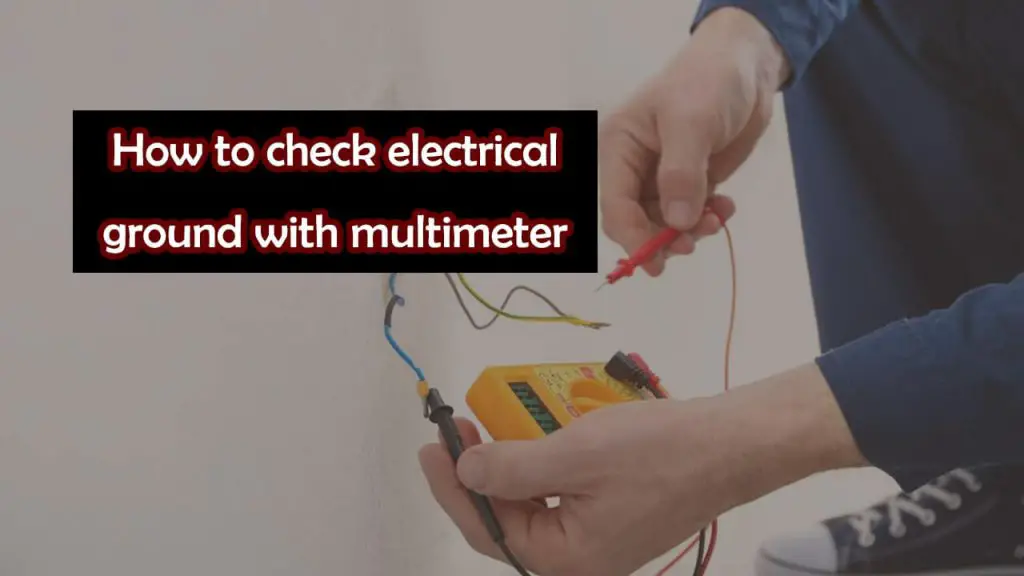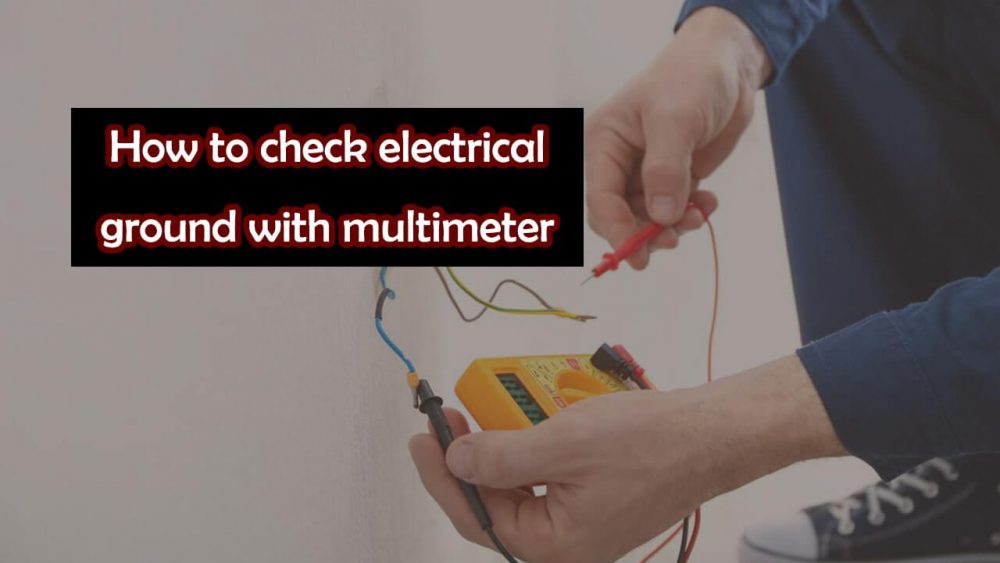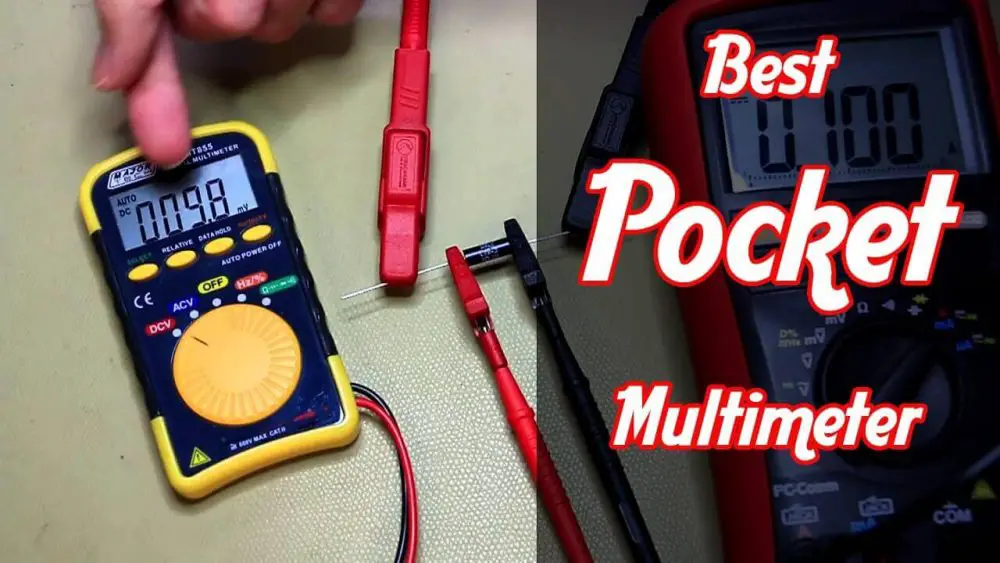How to check the electrical ground with a multimeter?
In this article, we’ll learn how to check electrical grounding with a multimeter; we’ve already learned about the different functions of a multimeter, as well as what a multimeter is and how it works. Now we’ll learn how to use a multimeter to check the electrical ground.
Table of Contents
What is Grounding?
Grounding is also known as earthing. It is a therapeutic technique that involves activities that “ground” or reconnect you to the earth electrically. This practice relies on the science of earthing and grounding physics and explains how the grounded electrical charges from the earth could positively affect your body.
How to check the grounding of a vehicle?
Today we are using a multimeter to test the ground on a vehicle; your ground has to be a good solid, back to your battery to measure the voltage correctly. If you do not have a good solid ground, the voltage measurement will not be good, and you need to install an aftermarket amplifier, which requires a lot of current draws. In addition, you need to make sure the grounding point for the amplifier is solidly good. Otherwise, you’re going to have what they call a grounding loop.

Car Structure to make ground
Your car is made up of steel, and steel is a good conductor, but it is not the best conductor, so what happened? When they manufacture the vehicle, they have different panels welded together, so there are spots on the metal sheet welded together. Still, sometimes those do not make good contact between one piece of metal to the other, so you have to make sure that you are going to check or use that piece of metal as your ground to measure voltage. You can not just visually assume that it will be solid ground, back to the battery because it is a piece of metal.
Ground for the speakers
Another thing you will notice is if you take your car to get an amplifier, installed at an audio shop. Let’s say that our amplifier is installed in the vehicle’s trunk, and one thing they will do is get a proper ground. If they cannot find a factory ground, then they will tap aground onto the metal sheet, and sand it down with sandpaper to make sure all the paint is removed, then they take the multimeter test to make sure that the grounding point is good.
The multimeter is set to Ohms to measure resistance
Therefore, to do that test, what you need to do on a multimeter is set it to this ohm measurement; it measures resistance, and on the multimeter, there’s also a symbol of Ohms. So this will calculate your resistance or the ohm on the circuit.
So how you would do that is if you take your positive and negative probe, how this works. When you have this set to measure resistance to anything between the two probes, it will give you a reading on the multimeter on what kind of resistance it is. If we will join these two probes, this is a direct short. So There should be no resistance between the two; as you can see, it might give you 0.6 -0.7 or 1.0 that tells you that this is a complete circuit.
Grounding points on an engine
There should be no resistance between the two probes; we will take one of the probes and put it into the battery’s negative terminal; we will quickly take the other probe and stick it onto one of the grounding points on the engine. So there are three points, or say if we connected to one of the bolts on the shock tower 1.8 or, let’s say, over the fender, there’s another bolt-on 0.5 somewhere on the engine block. And to touch the engine block, 0.0 is the perfect resistance.
Test the Continuity
This shows you that depending on where you connect to; there is going to be a slight difference, and you have to make sure that when you’re testing the continuity from one probe to the other probe, you have to make sure there’s no massive amount of resistance between it. So let’s say if you’re testing a wire that’s inside the vehicle to see if it’s a good ground, then you use a piercing probe and unplug one of the probe wires; plug this one. Then you can test the continuity between this piercing probe connected to the wire you are trying to check the grounding point and to test the kind of resistance.
Car Chassis as a ground
Let me tell you some examples of how the manufacturer uses the car’s chassis as a ground to connect their electrical. So if you see two bolts; those two bolts are connected to the driver side fender, which is a grounding point. They are used for the electrical on the passenger side. You will find three more bolts right there, third use as a grounding point for the car electric cover on the ECU. You will find a bolt there; that is the grounding point for the ECU. It is tied to the chassis, so here’s another test we can do with a multimeter to check the continuity and resistance.
Testing the Speakers
You can also use the multimeter to test a speaker because it has a big resistor. It has a coil of wire inside. We have here a car speaker which is 4.0 ohms. Most car speakers are 4.0 ohms, and what you want to do is disconnect the speaker from the car, and put your probe on the two terminals. You see, a multimeter now measures 3.94 ohms, so we know that’s good if let’s say you don’t get any measurement on these terminals, you typically know that the speaker is blown, because there’s no current passing through the coil, so we hope this article is helpful. Hopefully, it will help you troubleshoot any drowning problem, or if you are doing any installs that require good ground, and you will now understand how to use a multimeter to check the ground.
How to check the fuse?
we are doing the resistance measurement and this fuse check. It is supplying power to the amplifier, and its wire is connected to the positive battery terminal. And united this point is on the fuse to check for the voltage, but let’s say if we want to check the continuity of this piece of wire from here back to the battery terminal, the positive terminal. So we can put one probe on the battery terminal positive, and let’s touch the other end of the fuse. So as you can see, 000.1 tells us that the continuity from the battery terminal to this point on a fuse is good.
Frequently Asked Questions
The test is the same, but the chances of the results would not be perfect. It is difficult to ground in sandy or rocky soil because sand does not have the moisture to conduct electricity.
No, probes are the tool; they are not meant to improve the resistance or grounding of electricity. However, the probes will not be near or away outside of the electrical field of the testing ground, so that watering them does not influence the test result.
Conclusion
Theoretically, a correctly done ground wire will discharge electricity from a faulty wire and directly transfer it to the ground. However, when the ground wire is not done accordingly, electricity will go through anybody in case of an accidental electrical discharge. Therefore, that is why having a well-grounded house is essential.
Related posts:
Best Inexpensive Multimeter 2021





